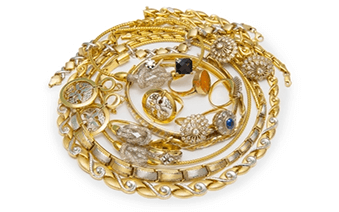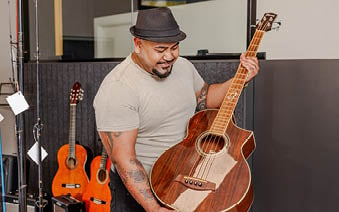With upgraded models and devices being released nearly every month, it’s easy to score yourself a good deal on quality second-hand computers, laptops and tablets.
To help you with the process and find the right option, we have some advice to help you buy the right second-hand equipment.
| Table of contents |
|---|
Everybody is different when it comes to buying a second-hand computer. You might want to work on the go with a laptop, or instead, you might like a big screen in your home office with a desktop.
It’s about deciding what works best for you.
Nowadays, powerful laptops can do whatever a desktop can. This, combined with the convenience of a portable device, can make laptops more expensive than desktops.
Used laptops or refurbished Macbooks are a better option for those looking at something portable for a low price.
If you’re looking for something portable and need it for tasks that don’t need much processing power, then get a tablet. These guys come thin and light, which makes them the best choice for those who need a device for presentations, casual gaming, web browsing, or watching videos.
Tablets are great for those who are looking for something they can use for multimedia purposes, like photo viewing and browsing the internet. Because of their great battery life, they make for great usage in households and the workplace.
Essentially, this is a tablet and laptop hybrid. A two-in-one is made to do both – work like a laptop, but be compact like a tablet. It’s thin and the design is made to fold easily because the keyboard that comes with it moulds with the device or can detach from the device itself – turning this hybrid into a standalone tablet.
If you want something with a lot of power to support large files and is fast for bigger tasks, a tablet or two-in-one may not be able to do that for you.
Do keep in mind that this type of device would incur additional costs if you want to make the most of it, like 2-in-1 accessories – that’s pen pads, keyboards and covers.
This one speaks for itself in terms of storage and upgrades. If you have a home office, a used desktop could be a great fit for what you need to do. Although you won’t be able to put it in your bag, you’re guaranteed a very powerful home setup.
Aside from the power they bring they also come with a lot of features including the ability to store as much as you want by upgrading the RAM and CPU.
The most important question to ask is whether the device will do the job you're buying it for.
When it comes to finding the machine that’s right for you, there are a few things to consider:
The next thing is overcoming the famous debate: PC or Mac?
Second hand MacBooks and iMacs are great for those who enjoy working creatively and want to do it all on a macOS (operating system). PCs, on the other hand, are perfect for those who want a Microsoft Windows or Chrome OS.
When it comes to reliability, according to the Tech Radar team, your safest bet is buying a trustworthy brand such as Apple, Asus, Lenovo, HP, Samsung or Dell.
Here are a few things you can do to help you choose the best brand.
There are some specific things you should always check to make sure everything is in good working order when you buy second-hand computers online or in-store. First, we recommend buying a recent product in near-new condition.
Do your research on the OS that’s on the product.
Check it has all the ports you need (HDMI, USB, VGA out) and that they all function. If you know you’ve got plenty of work to store on an external drive, you’ll need the right number of ports to easily transfer files or upload a document.
Some older machines rely on ports because they may not be up to scratch with cloud sharing or peripherals that can help connect to a device.
Check the screen for cracks, chips, and dead pixels. You can easily spot a dead pixel by looking out for tinges of green or one dot that resembles a dirt mark on your screen.
Some defects can be fixed cheaply if you really love the device, but try not to buy a computer with screen problems as it can be more expensive to fix it than what you paid to buy it.
Once you’ve checked that there aren’t any cracks or dead pixels on the screen, the next thing to look at is whether the display has good resolution. If you’re a creative who likes to edit photos or make art, a screen with high resolution can give you the best experience.
Are all necessary cords, cables and peripherals included? If not, how much will it cost to buy them? Some brands need specific accessories to go with it, like Apple.
You’ll find all the specs of a device on its menu.
Not all devices have serial numbers, but those that do should have them clearly displayed. If the serial number is scratched off or removed, you probably shouldn’t buy the device.
Manufacturer’s warranties for computers can often be transferred but be sure to check what information is required.
You may need details like the original owner’s name and address, or the seller may need to call the manufacturer. Most reputable second hand retailers offer a 90-day warranty on most goods outside of any manufacturer’s warranty.
Check the life of the battery and how long it lasts. Batteries are getting better by the minute. We’re no longer settling for two hours when we can get as much as 16 hours on a new computer.
Make sure the keyboard or touchscreen is working – simple.
If you’re looking for a simple device, like a tablet, then you won’t have much to worry about. However, if you’re looking for more space, computing power, and the chance to upgrade storage, then you might need a desktop, laptop, or two-in-one.
For portable devices, weight matters. Tablets and two-in-ones are super light, making them great to bring everywhere.
If you can, take it for a test run.
Things you should avoid when purchasing second hand IT equipment are:
Sometimes you’re better off going through a trustworthy reseller. Websites like eBay and Gumtree don’t have screening processes to guarantee that what you see is what you get.
Going through a second hand store can mean that a device is put through a screening process by trusted professionals to decide the value. You also get the chance to talk to someone who can answer questions you may have about the item.
At Cash Converters, we have a huge range of quality second hand tech to help make your life easier. All devices are thoroughly checked and ready for use, plus they come with a 90-day warranty.

Category: Buying Secondhand
So you’re looking for a second-hand instrument? Read our handy guide on what you need to know before you buy a second hand instrument.

Category: Buying Second-Hand
Are you curious about the world of buying and selling gold? Understanding the basics can help you make sure that what you buy is the real deal.

Category: Buying Second-Hand
Find out how the circular economy affects us and where Australia sits on the journey to creating a better world.

Answering your questions about loans and staying savvy

Get more bang for your buck with these handy tips.

Need some advice that’s not about cash? We can help.